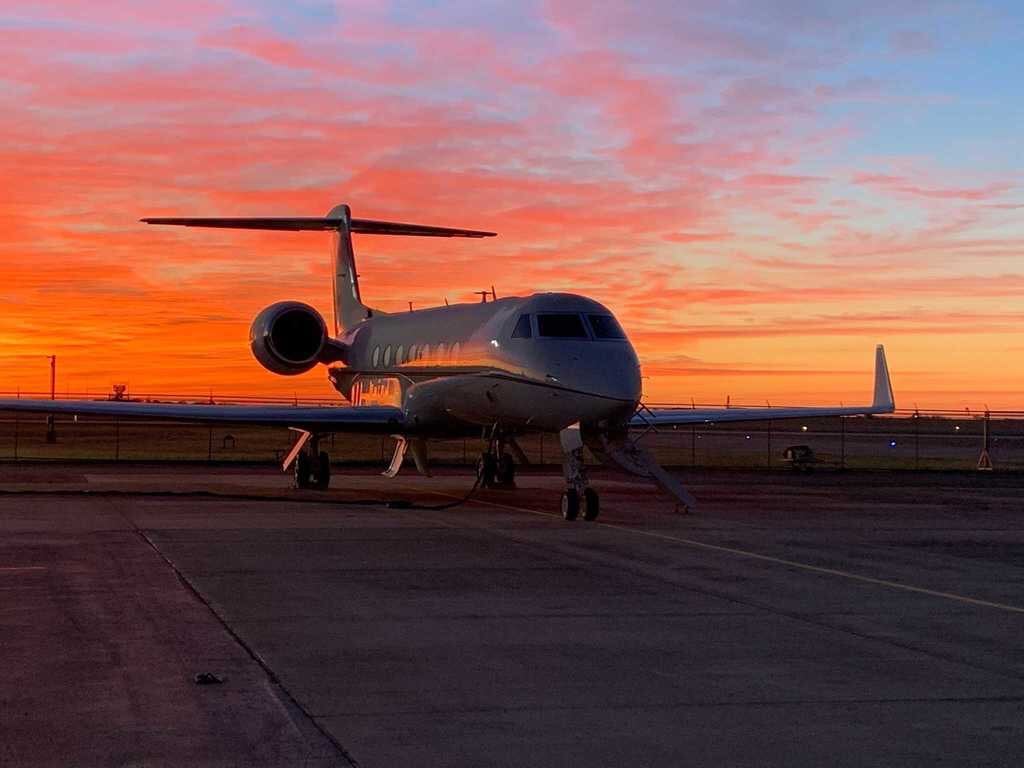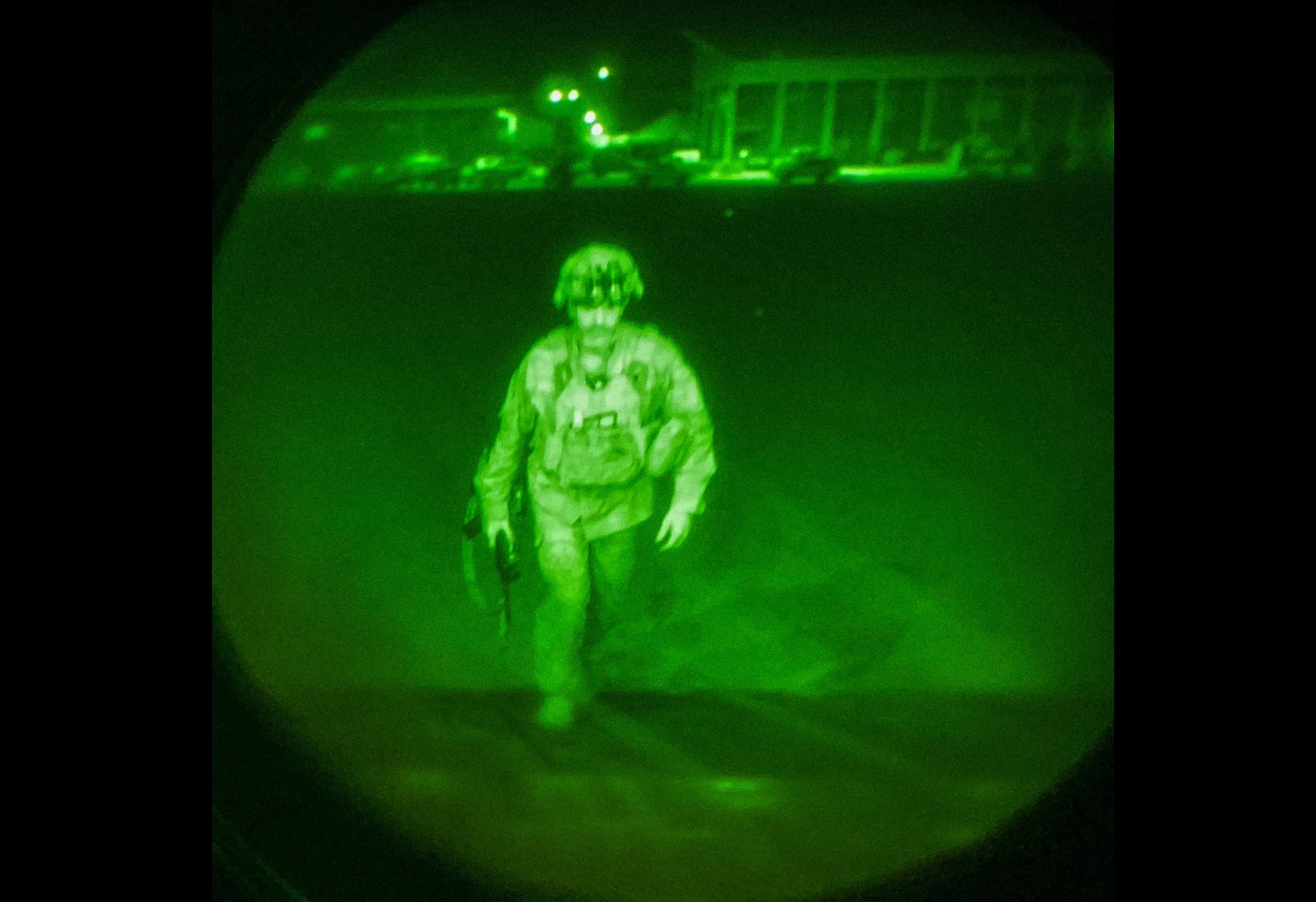WASHINGTON — The U.S. Air Force has now been in the Middle East for more than three decades. Even the end of the Afghanistan War isn’t likely to mean a major drawdown from the region.
While the Air Force has adjusted its posture — for example, bringing home its EC-130H Compass Call electronic warfare planes for the first time in 20 years — retired Gen. Herbert “Hawk” Carlisle does not expect a radical rebalancing of air power assets in the Middle East.
“It will change, but … it may not be as draconian or as significant as some people may think,” Carlisle, the former head of Air Combat Command who is now chief executive of the National Defense Industrial Association, said in an Oct. 21 interview with Defense News.
U.S. Air Forces Central Command did not respond to questions by press time.
John Venable, a former Air Force fighter pilot and defense policy expert at the conservative Heritage Foundation, said he suspects the U.S. will pull back some other strategic platforms — such as the RC-135 Rivet Joint reconnaissance airplanes — and only moved back in response to an emerging threat.
Many regional challenges remain that will keep the Air Force from making drastic changes, Carlisle said. Some mission sets might change, he explained, but the chances of fighter, tanker or mobility aircraft units coming home from air bases like Incirlik in Turkey or Al Dhafra in the United Arab Emirates are slim.
Indeed, the Air Force probably isn’t done with Afghanistan. Militant organizations such as the Islamic State group’s local branch, ISIS-Khorasan, and al-Qaida are still present there. The Biden administration has repeatedly stressed it plans to conduct so-called over-the-horizon airstrikes if terrorists pose a threat to the U.S., which will require a continued Air Force presence — including fighters or bombers to carry out strikes; intelligence, surveillance and reconnaissance aircraft; drones; and other support aircraft and functions such as tankers.
RELATED

Air Force Secretary Frank Kendall and Chief of Staff Gen. CQ Brown said in September that over-the-horizon strikes would not look considerably different than previous airstrikes in the region, although U.S. Air Forces Central chief Lt. Gen. Gregory Guillot was still ironing out the details.
“We’ve been doing over-the-horizon support [of] counterterrorism operations for a long time,” Kendall said at the Air Force Association’s annual conference. “It’s a question of scale, as much as anything at this point.”
Carlisle said the military must figure out exactly what it wants from over-the-horizon missions. Would they be used to observe terrorist training camps using ISR aircraft and then, if necessary, calling in an airstrike? Or would that capability be used to bomb a “single bad actor terrorist,” he wondered? And how would this work when the U.S. doesn’t recognize Afghanistan’s Taliban-run government?
Tension with Iran also remains high, which Carlisle said will further require the Air Force to remain locally. The Pentagon has alleged Iran is backing, among others, the militia groups Kata’ib Hezbollah and Kata’ib Sayyid al-Shuhada in Syria, and said they carried out drone attacks against American personnel and facilities in Iraq. The U.S. has twice this year carried out airstrikes along the Iraq-Syria border against the groups and their facilities.
RELATED

The U.S. also wants to keep open the Strait of Hormuz, the only way for ships to exit the Arabian Gulf to open seas. Iran has periodically threatened to block the vital conduit for oil shipments and other commerce.
For “the land component [of the military], leaving Afghanistan had a pretty large impact,” Carlisle said. “I think that naval, air and space components are going to still find a big demand signal coming from that part of the world.”
But losing air bases in Afghanistan — most notably Bagram Airfield near Kabul and Kandahar Airfield in the nation’s southern region — limits America’s ability to conduct counterterrorism operations in the region.
Other local bases have the capacity and flexibility to absorb operations that once operated out of Afghanistan, Carlisle said, but U.S. pilots will have to fly farther, which harms response times and requires additional support from tankers.
“Speed, range and payload are going to be a factor,” Carlisle said. “I know the Air Force is looking hard at this.”
Remotely piloted aircraft have been particularly useful in the region over the last two decades, Carlisle said, and that will likely continue — particularly toward keeping an eye on Iran.
Venable said he expects drones to come in handy for over-the-horizon efforts related to targets in Afghanistan, particularly because flying manned aircraft over that nation has become considerably more risky since the Taliban’s takeover. If an aircrew goes down in the Taliban-controlled nation, a combat search-and-rescue team would have to extract them before they are captured. Such a team taking off from the Gulf would face long flight times, require midair refueling and need to negotiate with Pakistan for a safe air route, among and other complications.
But a drone crashing in Afghanistan is simply a loss of hardware, Venable said.
To support its drone capabilities, the U.S. might seek a deal with a nation bordering Afghanistan to allow clandestine UAV bases, Venable said. But given Russian influence in the region, the Taliban’s strength and the way in which the U.S. left Afghanistan, that might be difficult, he added, even with a friendly nation like Uzbekistan.
“Uzbekistan [doesn’t] want regional trouble,” Venable said. “And after the United States pulled the plug on Afghanistan and left all of our allies in the lurch, why would they bet on us? For now, I think they’re going to sit back and wait for things to settle down before they’ll allow us to operate — clandestinely or officially — out of their country.”
That will mean flying drones or manned aircraft to Afghanistan out of Al Dhafra and Al Udeid Air Base in Qatar, he said. But again, that means flying around Iran and through Pakistani airspace — known to pilots as the boulevard.
“The trip itself ... is not too arduous, it’s just a long flight,” Venable said.
While the U.S. might shift its posture in the region, Carlisle said, American allies and partners there should expect a continued American role.
“I think there was a mistaken belief that we’re out of Afghanistan so we’re out of the Middle East,” Carlisle said. “There couldn’t be anything further from the truth.”
Stephen Losey is the air warfare reporter for Defense News. He previously covered leadership and personnel issues at Air Force Times, and the Pentagon, special operations and air warfare at Military.com. He has traveled to the Middle East to cover U.S. Air Force operations.








